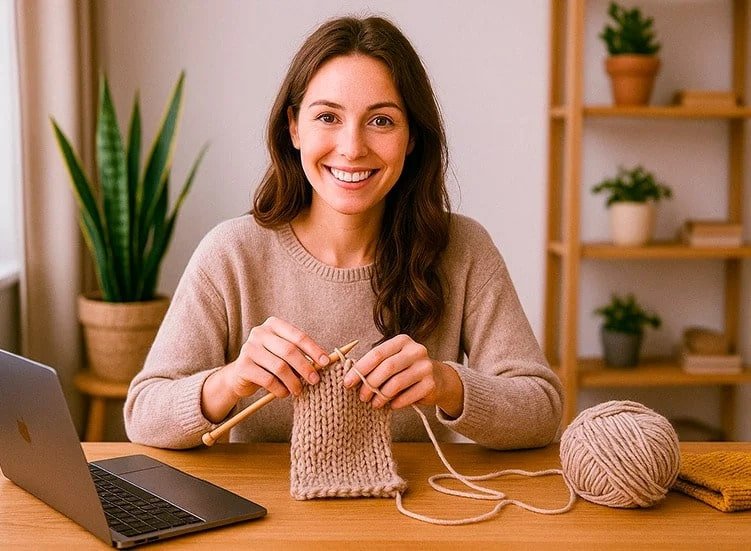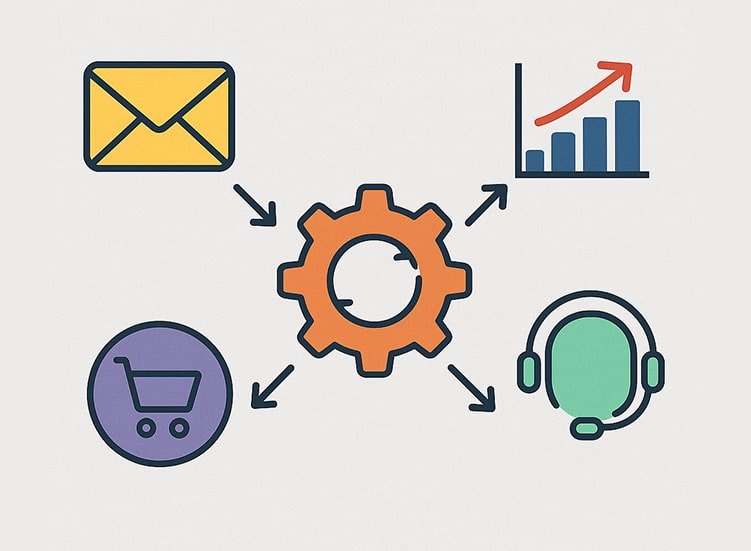We all have some activity that brings us joy and that we often practice just as a hobby: drawing, cooking, writing, playing an instrument, gardening, fixing things, among many others. Now imagine how great it would be to discover a way to turn a hobby into an extra income source?
In this article, you’ll learn exactly how to do that—how to turn an enjoyable activity into a source of income by following a realistic step-by-step process, with low risk and high growth potential, even if you’re starting from scratch.
We’ll walk you through 7 steps to carry out each stage, from identifying opportunities and validating ideas to getting started with a small investment and exploring monetization channels that match your hobby. All of this in a simple and straightforward way, applicable anywhere in the world—even if you’ve never started a business before.
Before learning how to turn a hobby into an extra income source, we first need to understand what a hobby is:
A hobby is any activity you do for pleasure, without the obligation to generate profit or professional results. It can be something creative, physical, intellectual, or manual, such as painting, writing, playing an instrument, cooking, gaming, practicing a sport, or participating in a community, among many others.
What sets a hobby apart is that it brings personal satisfaction, relieves stress, and often reveals talents you didn’t even know you had.
And yes, the vast majority of hobbies have the potential to become an extra income source, especially when approached with an entrepreneurial mindset.
Why turn a hobby into extra income?
- Flexibility: you work in your free time and at your own pace.
- Personal satisfaction: working with something you love can be very rewarding.
- Low risk: it’s possible to test your idea without large initial investments.
- Income supplement: in uncertain economic times, having an alternative source of income is strategic.
Step 1: Discover the potential of your hobby before thinking about how to turn a hobby into an income source
Not every hobby is automatically ready to become a business.
Before investing your time and energy, it’s essential to understand whether your hobby can truly generate value for other people.
To do this, analyze the following points and answer questions like:
💡 1. Does your hobby solve a problem or need?
We don’t always think of hobbies as solutions, but many of them address real pain points—whether practical, emotional, or aesthetic.
Practical examples:
- Being good at cooking meets the need for healthy or practical meals.
- Crocheting or woodworking can meet the demand for unique and personalized items.
- Meditation or yoga can help people dealing with stress and anxiety.
- Teaching a skill (like guitar, design, sewing) can serve those who want to learn on their own.
Helpful questions:
- What do people gain from my hobby?
- Does it save time? Solve an emotional problem? Provide pleasure, learning, or status?
Practical example: If you love making handmade candles, you can explore niches like decoration, aromatherapy, or personalized gifts. The same applies to those who enjoy sewing, coding, painting, cooking, or gaming.
🎯 2. Is there an interested audience willing to pay for it?
Not every hobby has enough demand to generate income. It’s important to validate whether there is a real audience interested and, more importantly, willing to pay.
How to find out:
- Search on Google, YouTube, and Pinterest: are people asking about this?
- Check for active groups, forums, or communities on the topic (Facebook, Reddit, Discord).
- Look for similar products and services on Mercado Livre, Shopee, Etsy, Hotmart, Udemy, etc.
- Use tools like Google Trends or Ubersuggest to assess search volume.
Positive signs:
- People searching for tutorials or related services.
- Similar products with good reviews and sales.
- Influencers creating content in the niche.
🔍 3. Is there competition? How do they make money?
Competition isn’t a bad thing—in fact, it proves there’s a market. What matters is understanding how others monetize their hobby and how you can stand out.
What to observe:
- Are they selling physical or digital products?
- Do they monetize through ads, affiliates, courses?
- Which channels are they active on? (Instagram, YouTube, blogs, marketplaces)
- What communication style do they use? What audience do they attract?
Tips to stand out:
- Focus on a micro niche (e.g., instead of “photography,” focus on “pet photos at home”).
- Offer a unique experience, such as personalization, fast delivery, accessible language, or a fun approach.
- Tell your story: a personal touch is a powerful differentiator.
Step 2: Shape your hobby into a real solution
After identifying that there’s an interested audience, the next step is to view your hobby not just as a pleasurable activity, but as a practical or emotional solution that addresses a pain point, desire, or need people have.
In other words: turn your passion into a product, service, experience, or useful digital content, something someone would truly be interested in paying for, following, or sharing.
🧠 Reflect on:
- How can my hobby create real value for other people?
(Does it solve a problem? Provide emotional relief? Save time or money? Offer learning?) - In what format is that value most easily perceived and appreciated?
(Physical product, personalized service, online course, consulting, free content with indirect monetization?)
Types of value your hobby can offer
- Functional value – solves a practical problem
Example: healthy meal prep → helps those who don’t have time to cook - Emotional value – provides entertainment, self-esteem, well-being
Example: personalized art → evokes emotion by representing something unique - Learning value – teaches something useful or interesting
Example: YouTube channel teaching gardening → helps beginners start at home - Status or identity value – reinforces who a person is or wants to be
Example: customized clothing → highlights personality, style, and exclusivity.
Practical examples: from hobby to solution
| Hobby | Possible solution | Format |
|---|---|---|
| 🎨 Drawing | Creation of personalized portraits or digital art products | Digital product (Etsy, own store), print-on-demand |
| 👨🍳 Cooking | Healthy meal prep for fitness audiences or dietary restrictions | Physical product (local production), or recipe channel on YouTube |
| 🎸 Playing guitar | Lessons for beginners, ebook with simplified chords | Online course, 1:1 consulting, monetized channel |
| 📸 Photography | Themed sessions, image bank, pet or product photography | In-person or digital service (stock photos, professional Instagram) |
| 🪴 Gardening | Consulting for small spaces, channel with practical tips | Course, ebook, channel with gardening product affiliates |
| ✂️ DIY and crafts | Personalized products for decoration or parties | Physical product (Store on Elo7, Shopee), monetized videos |
💬 Golden tip: format ≠ channel
It’s important to understand the difference between:
- Value format: what you deliver (product, service, content).
- Delivery channel: where you deliver it (online store, Instagram, YouTube, email).
Example: if you teach recipes (content), you can use Instagram as a channel, but also turn that content into a paid ebook, course, or monetize through affiliates and YouTube Ads.
🧩 Finding the ideal format
To find the best format to turn your hobby into income, consider:
- What people are already paying for in that niche?
- What you enjoy and find easy to produce?
- What skills and resources you already have (or can develop)?
- What requires the least initial investment to test?
You don’t need to get everything right from the start. The key is to begin with a minimum viable model, a simple and functional version of your solution — and adjust it based on public feedback.
Step 3: Test demand with minimal risk
Before investing time and money, validate:
- Offer it to friends and family and ask for feedback.
- Post on social media and watch for interest.
- Use platforms like Etsy, Hotmart, Shopee, Udemy or Canva to test ideas.
Tip: Start small and adjust based on your audience’s feedback and interests.
Step 4: Choose a monetization model
Here are the most common models:
1. Direct sale of products or services
- Handicrafts, clothing, food, decoration.
- Personalized services (classes, consulting, freelance work).
2. Content creation
- YouTube, Instagram, TikTok, Medium, Blogs.
- Monetization via AdSense, sponsorships, affiliate programs.
3. Infoproducts and courses
- E-books, workshops, mentorships.
- Platforms like Hotmart, Eduzz, Udemy.
4. Intermediary platforms
- Etsy, Fiverr, Upwork, Redbubble, Gumroad.
Step 5: Structure your online presence

Even if it’s a hobby, having a digital identity is important:
- Create a professional profile on social media.
- Use free tools to create a website or landing page.
- Register on platforms where your target audience is present.
Suggested tools: Canva, Notion, Linktree, Google Sites, Wix, Mailchimp (free or affordable plans).
Step 6: Use SEO and artificial intelligence to your advantage
If you want to attract people interested in your hobby (and the products or services that come from it), you don’t need to invest in paid ads right away. It’s totally possible to gain visibility organically by using SEO (Search Engine Optimization) and AI (Artificial Intelligence) tools.
📈 What is SEO and why do you need it?
SEO stands for “Search Engine Optimization,” meaning optimization so that your content appears at the top of Google, YouTube, Pinterest, etc.
Imagine someone searching on Google:
“how to make jar cake to sell”
If you have content with that title, good practical tips, and a clear structure, your content might appear there — for free.
The more visible your content is, the greater your chances of selling, gaining followers, or monetizing with affiliates.
🤖 How to use AI to help you (without being technical)
You can use AI tools like ChatGPT to:
- Generate content ideas:
“Give me 10 video ideas for someone who wants to sell jar cakes on Instagram.” - Create catchy and optimized titles:
“Create a blog title using the keyword ‘how to start a jewelry shop at home.’” - Write descriptions, captions, and even video scripts.
- Optimize your content with long-tail keyword suggestions.
(Such as “how to make money with handmade crafts at home with low investment”).
AI doesn’t replace your experience and creativity, but it speeds up the process, removes blocks, and helps you create more strategic content.
Step 7: Expand with partnerships and affiliate marketing
- Join affiliate programs related to your niche.
- Recommend tools you use and earn commissions.
- Participate in groups and communities for networking and promotion.
Examples of hobbies that turned into income
- Illustration → personalized t-shirt store with exclusive artwork.
- Reading → book blog with affiliate links for recommended titles.
- Gaming → YouTube channel monetized through views and sponsorships.
- Crochet → selling on marketplaces and offering online courses for beginners.
❓FAQ – Frequently Asked Questions about how to turn a hobby into an extra source of income:
Not necessarily. You can start as an individual, selling in small quantities or providing informal services. But as your income grows, it is recommended that you formalize as an MEI (Individual Microentrepreneur) to have access to benefits and operate legally.
It depends on the niche, the chosen format (product, service, content), and the effort applied. On average, it takes 1 to 6 months to start seeing a financial return. But remember: consistency and strategy are more important than speed.
Sim. Muitos modelos de monetização não exigem exposição pessoal. Por exemplo: vender produtos em marketplaces, criar um blog ou canal com voz sintética, vender ebooks ou artes digitais, ou trabalhar com afiliados.
Not always. Many projects can be started with resources you already have: a cell phone, internet, and time. Free platforms like social media, YouTube, Canva, Google Sites, and AI tools can help you get started without spending a fortune.
In theory, yes, but it is important to assess whether there is demand for it, whether there is an audience willing to pay, and whether you can deliver real value. With adaptation and creativity, even very niche hobbies can find their market.
Conclusion on how to turn a hobby into an extra source of income
Your hobby can be more than just a pleasure, it can be financial freedom!
Turning a hobby into an extra source of income can be a real and achievable possibility, even starting from scratch, with few resources.
You don’t need to quit your job or become an entrepreneur overnight. Just start with what you already love to do, understand how it can generate value for others and apply smart strategies, such as creating useful content, exploring micro niches and using tools like SEO and AI to your advantage.
With consistency and a long-term vision, your hobby can turn into:
- A complementary income that brings more financial peace of mind.
- A personal project that becomes your own business.
- Or even a source of personal fulfillment and free time.
The most important thing is to take the first step, test, adjust and learn along the way. And who knows? What started as a hobby may be exactly what will change your future.
To complement this content on extra income, you can also read this article that we recommend for those who like to take care of animals and are looking for an extra source of income with Pets, click and check out 7 real ways to profit from this market.
Did you like the article? Share with someone who also has a hidden talent and can turn it into an opportunity!
Click here for more content about Professions & Entrepreneurship.








